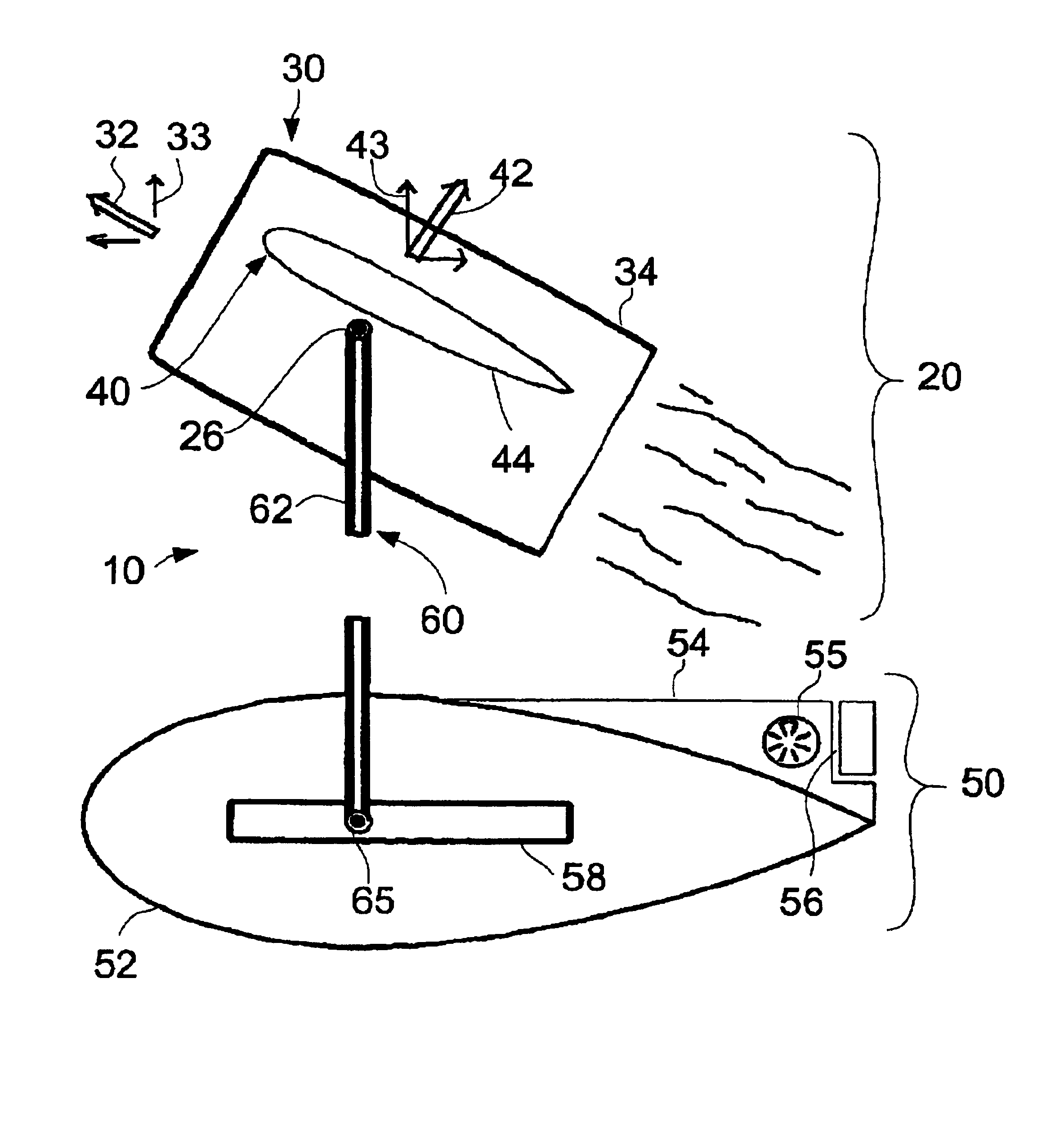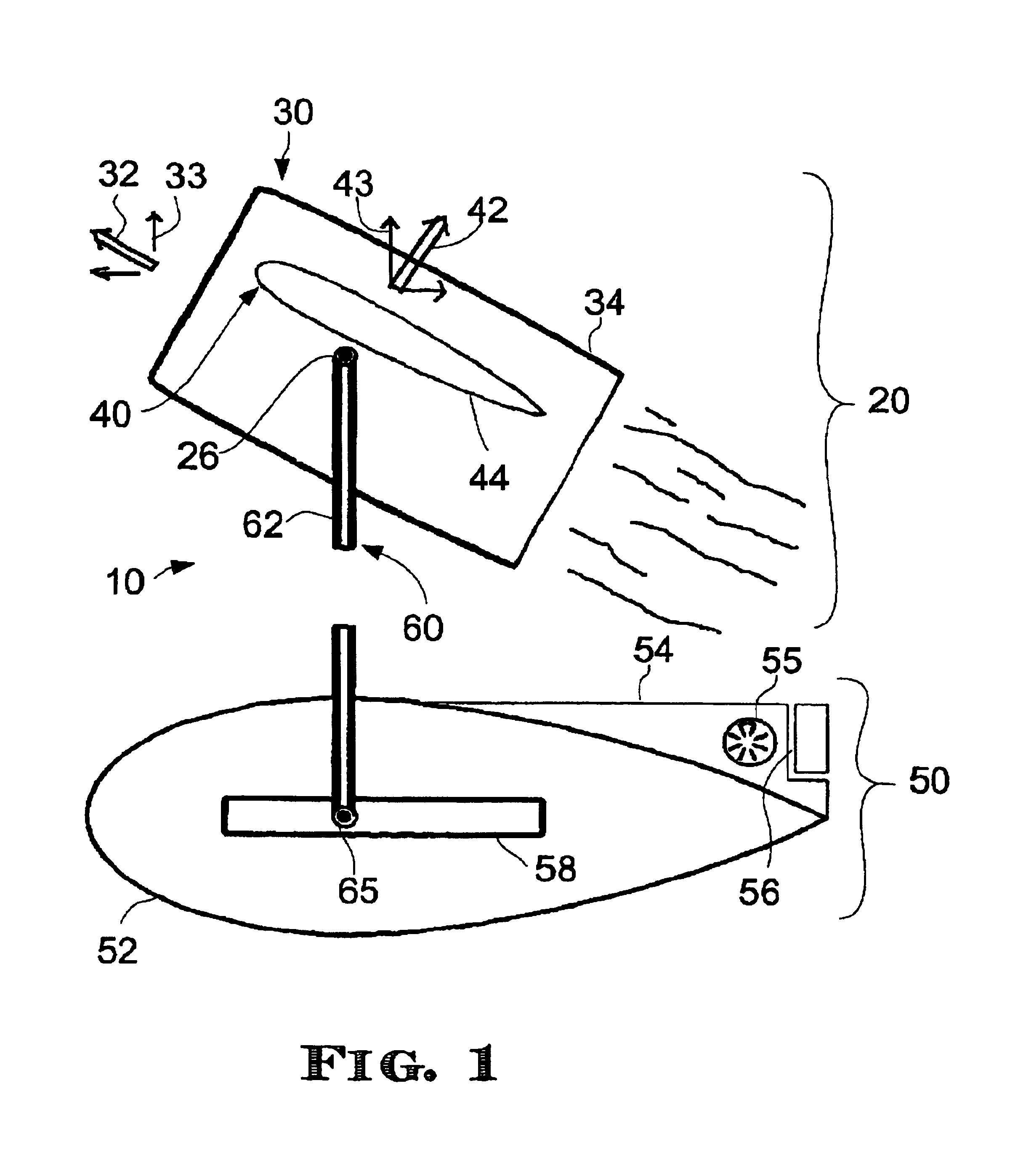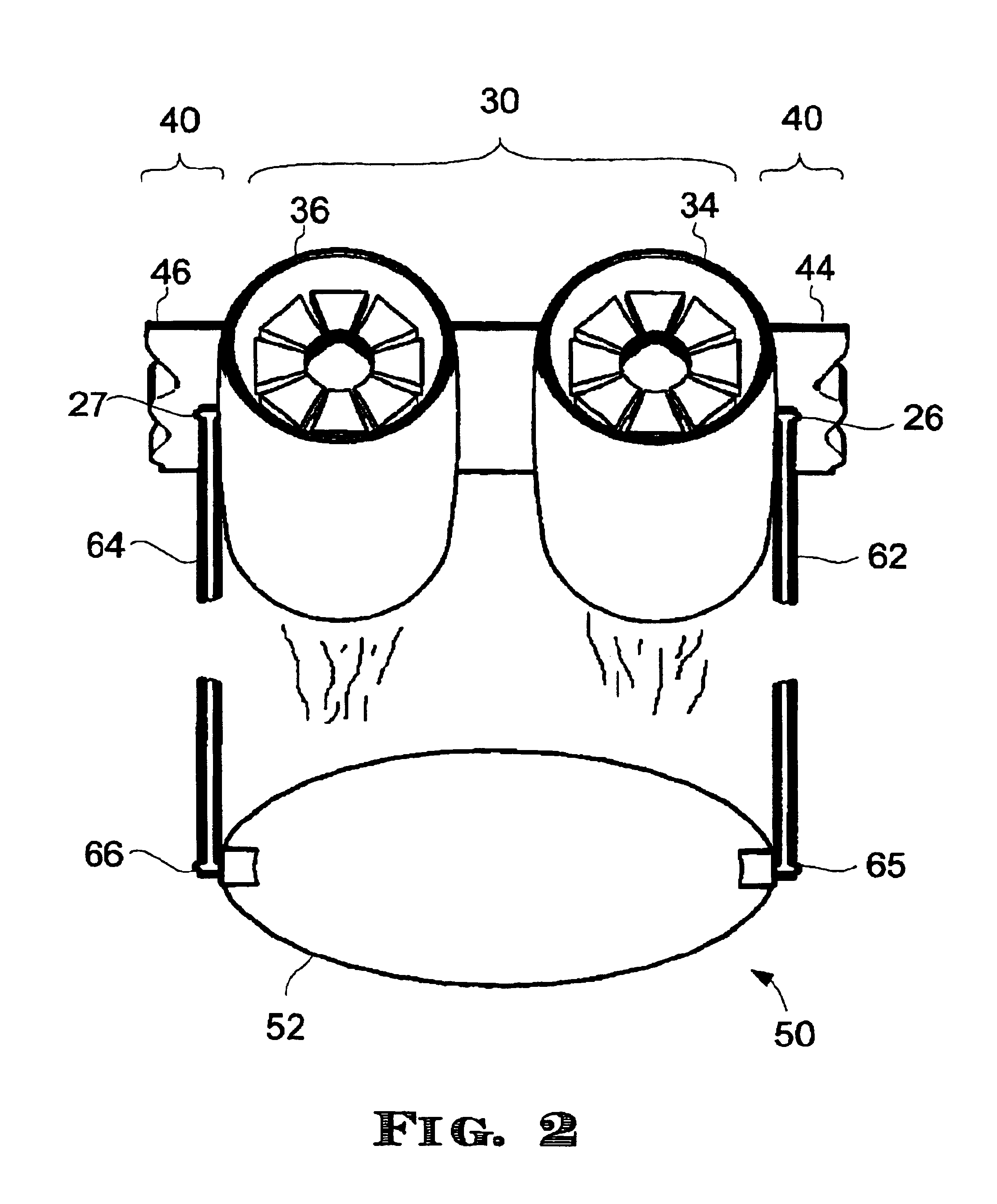Vertical lift flying craft
a vertical lift and flying craft technology, applied in vertical landing/take-off aircraft, aircraft navigation control, transportation and packaging, etc., can solve the problems of affecting the flight experience of the aircraft, requiring substantial clearance of the wing, and presenting safety hazards, so as to achieve the effect of inherent lateral stability and stability
- Summary
- Abstract
- Description
- Claims
- Application Information
AI Technical Summary
Benefits of technology
Problems solved by technology
Method used
Image
Examples
exemplary embodiment 100
[0106]A first exemplary embodiment 100 of the invention includes a lifting unit 104 that employs, depending on the mode of flight, a fixed wing aerodynamic lift system 103 and a propeller thrusting system 105, which may be better understood with reference to FIGS. 3-8. A lift unit according to various aspects of the invention includes any heavier-than-air structure suitable for developing a force including an upward component without exerting a corresponding force on any external supporting structure or relying on aerostatic buoyancy. A lift unit can develop such a force from a suitably configured thrusting system, an aerodynamic lift system, or both.
[0107]A thrusting system or propulsion subsystem included in a thrusting system, according to various aspects of the invention, includes any structure suitable for developing a force primarily by accelerating fluid in an opposite direction In a thrust-based lifting unit, the force includes an upward component. The accelerated fluid can ...
exemplary embodiment 200
[0123]In exemplary embodiment 200, lift system 204 employs both an aerodynamic lifting system 1300 that functions primarily when lift unit 204 is in horizontal flight, and a thrusting system 1600 that provides lift primarily during stationary or slow-moving ascension or hover flight. Exemplary thrusting system 1600 of FIG. 16 is comprised of a first torque-producing propulsion subsystem 252 and a second torque-producing propulsion subsystem 254, wherein subsystem 252 is positioned in front of and rotates counter to subsystem 254. The two propulsion subsystems 252 and 254 are, in a preferred variation, counter-rotating 0.46 cubic inch displacement 30% nitromethane-powered piston engines. A 12 inch by 6 inch normal or tractor propeller 256 is mounted onto propulsion subsystem 252, and a 12 inch by 6 inch pusher propeller 258 is mounted onto propulsion subsystem 254. Thrusting system 1600 further includes a pair of two-ounce fuel tanks 260, one for each propulsion subsystem, and a glow...
exemplary embodiment 300
[0143]Suspension structure 306 of exemplary embodiment 300 is formed from a single piece of semi-elastic material having sufficient flexibility that the pair of second bearing members 312 can be spread apart from one another and slipped over the pair of first bearing members 310. The material of suspension structure 306 has sufficient inherent damping to prevent harmonic oscillations in all modes of operation. The inherent material properties of suspension structure 306 provides a damped elastic mechanism to moderate movement of suspension structure 306 parallel to the rotational axis, as illustrated in FIG. 26. Thus the aircraft has improved yaw control in vertical flight.
[0144]A variation of embodiment 300 (FIG. 24) has a facetted annular wing with a canted tail to further reduce the radar signature.
[0145]Embodiment 300 provides transport of payload unit 308 using a gyrodynamically neutral system for converting fuel to thrust with a single engine having a balanced counter-rotating...
PUM
 Login to View More
Login to View More Abstract
Description
Claims
Application Information
 Login to View More
Login to View More - R&D
- Intellectual Property
- Life Sciences
- Materials
- Tech Scout
- Unparalleled Data Quality
- Higher Quality Content
- 60% Fewer Hallucinations
Browse by: Latest US Patents, China's latest patents, Technical Efficacy Thesaurus, Application Domain, Technology Topic, Popular Technical Reports.
© 2025 PatSnap. All rights reserved.Legal|Privacy policy|Modern Slavery Act Transparency Statement|Sitemap|About US| Contact US: help@patsnap.com



